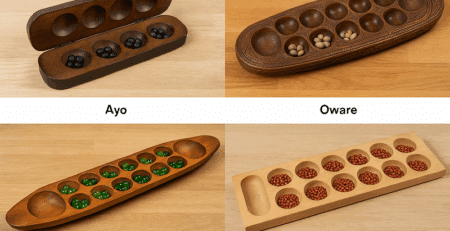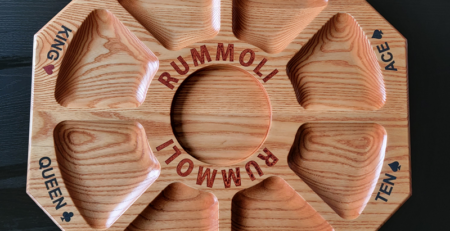Card Game Crib: Tips, Strategies, and Fun Variations
Welcome to the captivating world of Crib! This classic card game has delighted players for centuries, melding strategy, skill, and a touch of luck into a delightful experience for all ages. Whether you’re a seasoned player looking to refine your technique or a newcomer eager to grasp the fundamentals, this comprehensive guide is here to elevate your game. Dive into expert tips that will sharpen your strategy, discover innovative variations to keep your friends guessing, and uncover the subtle nuances that can turn you from an average player into a Crib master. Get ready to shuffle the deck, gather your companions, and embark on a journey through every twist and turn of the card game Crib—it’s time to play!
Mastering Crib: Tips, Strategies, and Fun Variations for Every Card Game Enthusiast

<sub>Image Source: FreeImages</sub>
Welcome to the captivating world of Crib! This classic card game has delighted players for centuries, melding strategy, skill, and a touch of luck into a delightful experience for all ages. Whether you’re a seasoned player looking to refine your technique or a newcomer eager to grasp the fundamentals, this comprehensive guide is here to elevate your game. Dive into expert tips that will sharpen your strategy, discover innovative variations to keep your friends guessing, and uncover the subtle nuances that can turn you from an average player into a Crib master. Get ready to shuffle the deck, gather your companions, and embark on a journey through every twist and turn of Crib—it’s time to play!
The Basic Rules of Crib
Cribbage, often simply called Crib, is a card game traditionally for two players but can also be played by three or four. The game uses a standard 52-card deck, and the goal is to be the first player to score 121 points. Points are accumulated through various combinations of cards during play and in the show.
At the start of the game, each player is dealt six cards. They then discard two cards into the crib, creating a secondary hand that the dealer can score once the main hands are played. The non-dealer cuts the deck to reveal the starter card, which is used in both players’ hands for additional scoring opportunities.
Players then take turns playing one card at a time in a cumulative sequence, aiming to create valuable combinations such as pairs, runs, and achieving sums of fifteen. The pegging phase continues until players cannot play without exceeding a cumulative total of 31. After pegging, players score their hands, starting with the non-dealer, and finally, the dealer scores the crib. The game continues with players alternating the role of the dealer until one reaches 121 points.
Essential Strategies for Winning at Crib
A fundamental strategy in Crib is the skillful selection of cards to discard into the crib. When discarding, consider the potential for creating valuable combinations with the starter card. For the dealer, placing cards that could form pairs, runs, or fifteens is advantageous. Conversely, the non-dealer should aim to discard cards that minimize the dealer’s scoring potential.
During the pegging phase, it is crucial to anticipate your opponent’s possible moves. Playing defensively can prevent your opponent from creating high-scoring combinations. For example, if the cumulative total is 14, avoiding a 1 or a 6 can prevent your opponent from reaching 15 or 31, respectively. Similarly, playing cards that force your opponent into unfavorable positions can be beneficial.
Another vital strategy is recognizing the value of mid-range cards, like 5s, which are extremely versatile and can form multiple combinations. However, be cautious as these cards are also highly sought after by your opponent. Balancing the retention of high-value cards with the necessity of discarding potentially beneficial cards to the crib is a skill that separates novice players from experts.
Common Mistakes to Avoid in Crib
One common mistake is neglecting the importance of the starter card. Many new players focus solely on their initial hand and overlook how the starter card can significantly alter potential scoring combinations. Always consider how this additional card can modify your hand’s value and adjust your strategy accordingly.
Another frequent error is overcommitting to a single strategy without adapting to the flow of the game. Crib is dynamic, and while having a game plan is essential, flexibility is equally important. Be ready to pivot your strategy based on the cards you receive and the moves your opponent makes.
Additionally, many players underestimate the significance of the crib, especially when they are the dealer. Discarding cards that could potentially create strong combinations for the crib should be avoided. Conversely, as the non-dealer, avoid placing valuable cards into the crib that can give your opponent an edge. Always think ahead and consider the broader implications of each discard.
Advanced Techniques for Experienced Players
For seasoned Crib players, advanced techniques involve deeper analytical skills and psychological tactics. One such technique is card counting, which involves keeping track of which cards have been played to predict the remaining cards in the deck. This skill can significantly improve your ability to make strategic decisions during the pegging phase.
Bluffing and misdirection also play a crucial role at advanced levels. By playing certain cards, you can lead your opponent to believe you have a different hand than you actually do. This can force them into making suboptimal plays, giving you a strategic advantage. Mastering the art of deception can be a game-changer.
Additionally, understanding the odds and probabilities of specific card combinations can enhance your decision-making process. For instance, knowing the likelihood of drawing a particular card can influence whether you decide to risk a high-scoring combination or play it safe. Advanced players often use statistical analysis to inform their strategy, making them formidable opponents.
Fun Variations of Crib to Try
While traditional Crib is immensely enjoyable, exploring variations can add an exciting twist to the game. One popular variation is five-card Crib, where each player is dealt five cards, and one card is discarded into the crib. This variation often results in faster games and requires different strategic adjustments.
Another intriguing variation is three-player Crib, which introduces a unique dynamic. In this version, each player is dealt five cards, and one card is discarded into the crib. The non-dealer and third player alternate roles, creating a rotating dynamic that adds an extra layer of strategy and unpredictability.
For those seeking a team-based challenge, four-player Crib is an excellent choice. Players form two teams of two, with partners sitting opposite each other. The game follows the same rules as traditional Crib, but with the added element of teamwork and collaboration. This variation encourages communication and strategic planning between partners, making it a highly engaging experience.
The Importance of Scoring in Crib
Scoring in Crib is the heart of the game, and understanding its intricacies can significantly impact your success. Points are awarded for various combinations, such as pairs, runs, flushes, and the elusive “his nobs” (a jack of the same suit as the starter card). Mastering the art of recognizing and calculating these combinations is essential for maximizing your score.
One key aspect of scoring is the ability to quickly and accurately count points during the pegging phase and the show. Experienced players often develop mental shortcuts and patterns to streamline this process, allowing for faster and more efficient gameplay. Practice and repetition are crucial for honing this skill.
Additionally, understanding the significance of positional scoring can give you an edge. For example, strategically aiming to reach critical points on the board, such as 15, 31, or 45, can provide additional scoring opportunities and disrupt your opponent’s strategy. Recognizing these pivotal moments and capitalizing on them can be the difference between victory and defeat.
Playing Crib Online vs. In-Person
In today’s digital age, Crib enthusiasts have the option to play online or in-person, each offering unique advantages. Online platforms provide the convenience of playing anytime, anywhere, and often include features such as automatic scoring, tutorials, and advanced analytics to help you improve your game. This accessibility makes it easy to practice and compete against a wide range of opponents.
On the other hand, playing Crib in-person offers a more tactile and social experience. The physical interaction with the cards, the opportunity to read your opponent’s body language, and the camaraderie of playing face-to-face add a rich dimension to the game. Many players find the in-person experience more engaging and enjoyable.
Both formats have their merits, and many players enjoy the flexibility of alternating between online and in-person play. Whether you prefer the digital convenience or the traditional charm, embracing both methods can enhance your overall Crib experience and broaden your skills.
Resources for Learning and Improving Your Crib Skills
For those looking to deepen their understanding of Crib, a wealth of resources is available. Books and strategy guides offer comprehensive insights into the game’s nuances, from beginner tips to advanced techniques. Titles such as “Winning Cribbage Tips” by Dan Barlow and “Play Winning Cribbage” by DeLynn Colvert are excellent starting points.
Online platforms and forums also provide valuable opportunities for learning and improvement. Websites like Cribbage Corner and the American Cribbage Congress offer a wealth of articles, tutorials, and discussion boards where players can share insights and strategies. Engaging with the Crib community can provide fresh perspectives and enhance your gameplay.
Additionally, mobile apps and online games offer interactive and immersive learning experiences. These platforms often include tutorials, practice modes, and multiplayer options, allowing you to test your skills against a diverse range of opponents. Utilizing these resources can accelerate your learning curve and help you achieve mastery.
Conclusion: Elevate Your Crib Game Today
Crib is a game that combines luck, strategy, and skill in a captivating and rewarding experience. Whether you are a novice seeking to learn the basics or an experienced player aiming to refine your techniques, there is always room for growth and improvement. By mastering the fundamental rules, employing essential strategies, avoiding common mistakes, and exploring advanced techniques, you can elevate your card game crib to new heights.
Embrace the fun variations to keep the game fresh and exciting, and understand the importance of scoring to maximize your points. Whether you choose to play online or in-person, the key is to enjoy the journey and relish the challenge. Utilize the available resources to continually learn and improve, and you will find yourself becoming a formidable Crib player in no time.
So, shuffle the deck, gather your friends, and immerse yourself in the delightful world of Crib. The next hand you play could be the one that cements your reputation as a Crib master. Happy playing!











